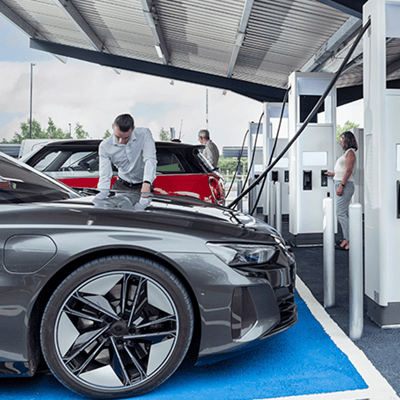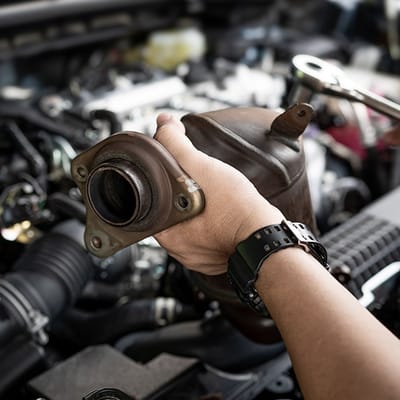- SolutionsWith a strategic solution that works for you and your business, you can unlock revenue-generating opportunities and begin managing your fleet as an investment.Overview
- About UsWhen Holman was founded in 1924, we set something positive in motion. Our consistent focus on people and our commitment to integrity make us who we are today.Overview
 Join Our TeamWe’re not just in the automotive business, we’re in the people business. Join us for the ride.Browse Careers
Join Our TeamWe’re not just in the automotive business, we’re in the people business. Join us for the ride.Browse Careers
Avoid Silofication – Lease vs. Purchase
Holman Marketing
October 4, 2021

When there’s uncertainty throughout the supply chain, most businesses will adjust their annual ordering and budget plan. While such disruptions can certainly present a number of challenges, many proactive organizations view this kind of unfortunate situation as an opportunity to reevaluate their acquisition strategy.
Often the conversation begins with one or more complex questions: How Does a Fleet Lease Work? or What Is a Fleet Purchase?
To begin to answer these long-standing questions, here are a few important considerations as well as some initial conversation starters to help guide your decision-making process.
Lease or Buy Fleet Vehicles?
For many organizations, there’s always been a perceived fear of leasing – a concern that you could end up paying more in terms of total cost of ownership (TCO) as compared to owning a vehicle outright. Fortunately, advanced analytics can help change that perception by transforming your fleet data into actionable insights that highlight the true TCO for each acquisition scenario.
Today, leasing, purchasing, and financing are all viable options when it comes to acquiring vehicles for your fleet.
For some companies, purchasing or financing vehicles may be the best way to invest capital directly back into your business, but this can also restrict cash flow. For others, leasing may be a more attractive option, as lower payments allow you to maintain liquidity and retain capital for other investment opportunities. And in many scenarios, a hybrid solution comprised of both purchasing and leasing vehicles may provide significant benefits for your organization.
As you decide whether to lease, finance, or purchase your vehicles, don’t be fooled by myths. Trust the facts (i.e., data), and treat your fleet just as you would any other strategic business asset by determining which option(s) delivers the most value for your organization.
What’s best for your business?
Remember, there’s no one-size-fits-all approach for vehicle acquisitions. Your business is unique, which makes every acquisition-related decision just as distinctive. Leasing, financing, or purchasing vehicles impacts your company’s fiscal future in different ways. You’ll need to carefully weigh the pros and cons of each when you develop your acquisition strategy.
As you work to determine what’s best for your organization, answer these key questions to help guide your decision-making process:
- Do we have to navigate any potential budget constraints or other financial limitations?
- How will our acquisition strategy impact our business’ cash flow or operating capital?
- Are there any rules, regulations, or credit challenges that may limit our options?
- What are the operating conditions of our vehicles (miles driven, wear and tear, etc.)?
- How does our acquisition strategy align with and support the overarching goals of our business?
You’ll also want to consider how important vehicle reliability is to your business. If uptime and productivity are of paramount importance, your fleet will likely benefit from shorter lifecycles, which tends to favor leasing. While acquisition costs could be slightly higher, the lower operating costs often associated with newer units could help to offset this initial investment.
On the other hand, if your fleet includes a number of costly, highly-specialized vehicles, you may be best served spreading this capital investment over an extended lifecycle, which may favor purchasing/financing. But there are certainly additional factors to consider. Most notably, you could incur higher operating costs and lower productivity as the units age, making proper preventative maintenance much more vital to maximizing reliability.
Break out of the silos
If your fleet is like most, there are a number of stakeholders from across your entire organization – budgeting, procurement, operations, etc. – who influence your organization’s acquisition strategy. As you reassess your strategy, ask yourself: Are all these stakeholders on the same page or are they operating in isolation, blind to how their decisions impact the overall process?
This is silofication, and if you let these blind spots linger, you risk exposing your fleet to a number of hidden flaws that could reduce productivity, increase costs, and hamper your acquisition strategy. Instead, take this opportunity to align all stakeholders, eliminate the silos, and embrace a holistic solution that addresses the entire lifecycle – buy, drive, service, and sell.
And as always, remember, we’re here to help you navigate these challenges, understand the variables, and help you determine the best strategy to keep your business moving forward.
Be sure to watch this video to learn more about avoiding silofication and eliminating hidden flaws in your supply chain.
Related Resources
Explore more related industry news, insights, and developments.








